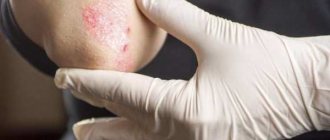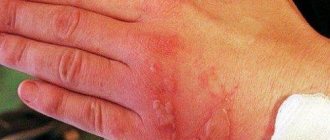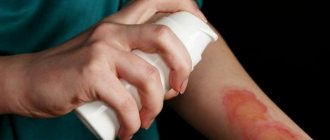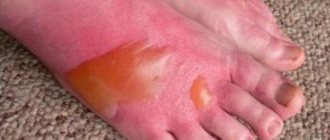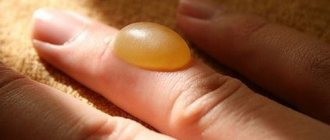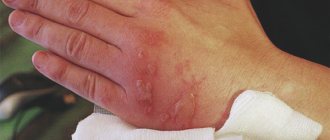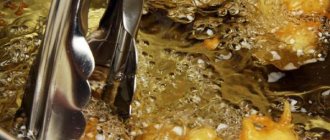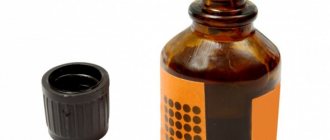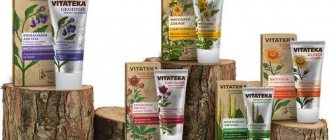Burns are treated in different ways - open and closed. But the open method is used mainly in appropriate hospital settings. To prevent infection from getting on the burn surface, it is better to apply medicinal bandages to the affected area for burns. This will help prevent the wound from becoming infected and will promote faster healing.
Modern types of materials
Any type of burn needs proper treatment with antiseptic agents, possibly pain relief and protection from infection entering the wound.
For such purposes, special dressings are applied to the wound surface, which have the following properties:
- protection of the wound from penetration of pathogenic microorganisms;
- antiseptic treatment;
- moisturizing the wound;
- anesthesia;
- acceleration of regeneration of damaged tissues;
- local effect of a medicinal substance to accelerate healing.
During manipulation, various medications are used to disinfect and treat damaged skin. As a rule, the procedure is carried out in a medical institution, where sterile dressing conditions are provided and high-quality components are selected.
Important! Often the victim does not have the opportunity to immediately seek medical help; in such cases, special ready-made products may be needed to protect against germs, which you should have in your home medicine cabinet.
First aid for thermal or chemical damage to the skin
Why is there a need for new materials?
A big disadvantage of products made from sterile gauze or bandage is the acute pain during the procedure for replacing them. Such materials adhered tightly to the wound surface and further injured it. Another disadvantage is the low sorption capacity, so the wound can remain moist for a long time and takes longer to heal.
The benefits of new treatments
New high-quality sterile materials are replacing old methods.
Such products have a number of advantages.
- Cotton fabric, a polymer base, adhesive tape and other sterile and easy-to-use substances are used as dressings.
- The composition of the products includes medications with an antiseptic effect, antibiotics, and painkillers.
- Modern preparations can easily maintain an acceptable level of moisture in the burned area of the skin.
- Any remedy has two sides. On the sterile side there is a medicinal substance, and on the other there is a convenient fixing material.
Local treatment for burns
Types of dressings and their purpose
When making products, the degree of the burn, its area and the characteristics of the healing process, its main stages, are taken into account.
Today, a bandage for burns is selected depending on the purpose of treatment.
| Types and purpose of dressings | |
| For antiseptics | Usually this type of remedy is used for first aid to the victim. The material chosen is a sterile bandage, gauze, which can be dry or soaked in an antiseptic solution, or more modern and less traumatic substances. |
| Using ointment | The finished products consist of a mesh layer with the main drug, as well as a protective outer layer. One of the most common is voskopran with beeswax and levomekol. Effective ointments are methyluracil, povidone-iodine, levomekol, branolide. Dressings for the treatment of burns at the granulation stage are often prepared on an ointment basis. |
| Wet based | In case of pathology of the 2nd and 3rd degrees, when a scab appears during a purulent and inflammatory process, wet materials are prescribed. For their preparation, antiseptics and anti-inflammatory components are used. For example, gelepran with miramistin and lidocaine provides good pain relief and accelerates the healing process. |
| Hydrogel | Gel anti-burn dressing is very popular today. It not only reliably protects a person from infection, but also restores damaged tissue. There are three types of hydrogel material:
Prescribed for the treatment of wounds in a damp environment, to eliminate the chronic purulent process. Promotes the rejection of purulent necrotic particles. |
Branolide for the treatment of damaged skin
Hydrogel-based products
How to use for burns
To get the maximum benefit from the procedure, you must follow the rules for applying dressings.
- First of all, the factor causing the burn is eliminated. Also, if you have clothes or shoes in a sore spot, you must carefully remove excess items from the damaged area. If the fabric is stuck to the skin, it should not be removed under any circumstances, but only cut off the clothing around the wound as carefully as possible.
- Next, the burned skin is cooled with running cold water. Cooling and pain relief are thus effective in the first 30 minutes after injury and prevent swelling and reduce the possible negative consequences of pathology. Along with the effect of cold water, the patient is offered analgesics for severe pain.
Types of dressings for wound treatment
Next, anti-burn dressings are applied to the affected area, not extending beyond the wound by more than 2 cm.
The rules of application are as follows:
- You should wash your hands thoroughly and treat them with an antiseptic.
- The burn surface is pre-cleaned and disinfected.
- Sterile dressing material is cut to the size of the wound.
- The protective layer is removed.
- The product is carefully applied to the skin 2 cm around the damaged area.
- If there is an ointment with an antiseptic, analgesic effect, it is applied under the dressing to the wound area.
- Next, you will need to secure the bandage with a plaster or bandage.
The procedure is not performed for 3rd or 4th degree burns, or for injuries in the facial area. Difficulties in implementation arise precisely when determining the degree of burn.
The manipulation is carried out if the skin only turns red at the first stage or small blisters appear as a sign of the second degree of injury. In other cases, emergency medical care cannot be avoided.
Bandage removal procedure
It is important not only to choose the right product to protect the wound surface, but also to change the product in time. The time to change the bandage differs from the stage of the disease and the total area of the burn. Typically, the dressing is changed every 48 hours. It is better not to cover the treated wound with clothing, but to leave air access. It is recommended to examine the sore spot every day.
If there is an unpleasant odor, the color has changed, or pus or blood is leaking from the wound, you should immediately visit a doctor. You cannot change the material yourself, especially when it has dried out, when changing the bandage is accompanied by severe pain. In such cases, sensitive skin is very easily injured.
During the procedure, the specialist assesses the condition of the burn, gives recommendations for caring for the affected area, and answers the question of whether it is possible to apply a bandage to the burn and how long the treatment will last.
Important! If there is no improvement within 2 weeks, you may need a change in treatment and additional examination by a doctor.
Treating burns at home
Bandage removal procedure
If, when changing the anti-burn dressing, you notice that the bandage has become strongly stuck to the wound, do not tear it off by force. Not only will it be very painful and the burn site will bleed with renewed vigor, but there is a risk of infection. Wetting with an antiseptic will help the bandage come off. Wait until the fabric gets wet and begins to peel away from the skin, and only then remove the bandage.
On average, a moderate burn wound heals within 2 weeks. If this does not happen, and the situation worsens, immediately consult a doctor and begin treating the burn in a hospital setting.
source
Antiseptic dressings
An important stage of first aid and further successful treatment is antiseptic treatment of the wound surface for pathology of any degree. Burn dressings containing antiseptic substances have a disinfecting effect, destroy germs and prevent serious complications of injury.
Today you can find many types of such products in any pharmacy. This widespread use in burn therapy is explained by the high risk of infection after injury. The best choice is considered to be products with silver, iodine, but without ethyl alcohol.
Miramistin
The drug is used to treat the skin and is active against gram-negative and gram-positive bacteria, as well as fungal infections.
Argakol
The gel-like coating for the wound includes antiseptic substances and protein hydrolyzate. When applied to the skin, it forms a protective film and has a powerful anti-inflammatory and wound-healing effect. It is used as an independent product and simultaneously with a dressing material.
Chlorhexidine
Chlorhexidine is often prescribed as an antiseptic. A sterile bandage for a burn with this medicinal substance will prevent infection of the wound.
Acerbin
A medicated spray solution is used to clean the wound before applying any dressing. Due to the lack of direct contact with the skin, it is easy to use.
Do I need to apply a bandage to the injured area? The modern quality of dressing material is very high, so the product has many advantages. You should definitely have at least one of the ready-made modern drugs at home. The products do not stick to the skin and do not cause pain, as with the usual procedure for changing a bandage or gauze.
Vitavallis
The drug does not contain antibiotics or other drugs. Includes silver ions and is made of a special antimicrobial fabric.
Vitavalis in anti-burn therapy
Voskopran
A burn dressing with beeswax, methyluracil and the antibiotic levomekol is used at the granulation stage in the absence of purulent contents. The synthetic mesh does not leave any fibers in the wound surface. The application of such a product provides a long-lasting therapeutic effect.
Voskopran for wound healing
Biodespol
The transparent film of three layers consists of a special copolymer, has an antibacterial effect, and reduces pain perception.
Mepilex
If there is wound discharge, use mepilex with silver. For damage from stages 1 to 3, a special pad from this company is prescribed, which does not need to be changed for 2 weeks. A secondary dressing with special substances is only attached to the pad.
Modern wound healing dressing mepilex with silver
Aquacel extra and aquacel foam
Silver in the composition in ionic form acts on most pathogenic microorganisms. The Aquacel foam product is made using new technology using hydrofiber, which will reliably protect against external influences of moisture and pollution. What is new in this product is the use of a non-woven base and a protective layer of polyurethane foam.
Banolind dressings
Branolind burn dressing is a modern remedy for the treatment of burns and other wounds. It has a cotton mesh base. Branolind is an ointment dressing whose active ingredient is Peruvian balsam. Therapeutic impregnation has the following ingredients:
- Branolind ointment;
- glycerol;
- petrolatum;
- cetomacrogol;
- purified fat.
At the pharmacy you can purchase a package of Branolind with 10 or 30 pcs. mesh bandages. It is also possible to buy the mesh individually. This remedy has proven to be an excellent way to protect against infection, accelerate regeneration, and relieve inflammation. Branolind is widely used in surgery after skin grafting to accelerate cell growth and trouble-free tissue engraftment.
Based on consumer reviews, Branolind copes well with non-healing wounds of any nature. Pregnancy and lactation are not contraindications for use. It can also be used by children and adolescents.
General recommendations
Before carrying out the procedure, especially at home, it is better to familiarize yourself with the basic recommendations.
- It is important to maintain sterile conditions during any type of procedure for burns.
- When choosing a material, the degree of injury is taken into account and most often, products for external use are used for 1st and 2nd degree burns.
- Before applying protective agents, the skin is treated with an antiseptic solution, and various ointments are also used.
A serious complication is burn disease when 5-10% of the entire surface of the body is affected, therefore proper first aid is important to prevent it.
If the injury is major, the patient must be hospitalized to eliminate shock, as well as to avoid renal and heart failure. Cases of sepsis are not uncommon, but with timely disinfection and protection from external pathogenic microorganisms, such complications will not harm human health.
Aquacel to protect skin from infection
For effective treatment and prevention of the infectious process, follow the rules for treating wounds for burns. Modern materials for dressings are very convenient and effective, and their proper use will protect the victim from many complications of the pathology.
Indications for applying a bandage for burns
In pharmacies, anti-burn dressings are presented in a large assortment and are suitable for treating wounds of varying severity. Applying bandages with medications for burns is considered a closed method of treatment. The drugs and type of dressing depend on the extent of the lesion. A closed method of therapy is necessary to achieve the following results:
- protecting the wound from secondary infection, injury and hypothermia;
- reducing the evaporation of moisture from the burn;
- medications stop the proliferation of bacteria and promote the regeneration of affected cells;
- Without a bandage applied to the wound, a patient with severe burns cannot be transported to the hospital.
When providing first aid in case of serious injuries, ointments should not be used, as they may affect the correct determination of the degree of injury and the final diagnosis.

